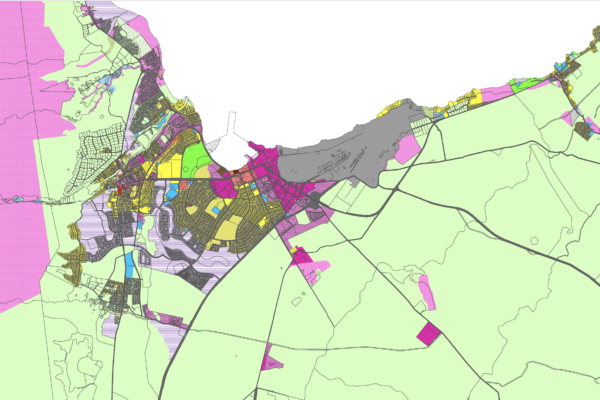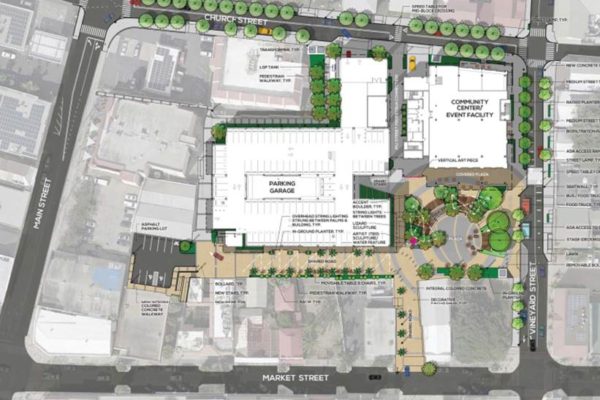October 2, 2013
State of Hawaii, Land Use Commission
P.O. Box 2359
Honolulu, Hawaii 96804-2359
Re: Piilani Promenade EIS Preparation Notice
Aloha Chair Chock, Commissioners, and Staff
Maui Tomorrow Foundation appreciates the opportunity to comment on the EISPN for Piilani Promenade. We believe this document does not include adequate discussion of several key areas:
-
Environmental review for the proposed 13-acre Honua’ula workforce housing project. While under separate ownership this project shares entitlement approvals and is dependent upon the proposed 75-acre Commercial/Residential project for basic infrastructure needs.
-
The 13-acre Honua’ula site is included in the original LUC DBA approval for an 88-acre Light Industrial Park, and subject to all the LUC conditions adopted in 1995. In order to provide the LUC with adequate information on proposed project impacts and support the applicant’s motion to amend the original DBA conditions, impacts associated with development of the 13-acre workforce housing project must be included, regardless of ownership.
-
Under the EISPN discussion of “Cumulative and Secondary Impacts,” it is clear that cumulative impacts of the project must be discussed “regardless of what agency or person undertakes such other actions.” As the 75-acre commercial project is providing the access road and other infrastructure that makes the 13-acre Honua’ula project possible, impacts of both must be included in the EIS as part of cumulative impacts.
-
Also not included is any alternative project design that could avoid alteration of Ka’ono’ulu gulch and cultural sites therein.
(HAR 11-200-17) requires that an EIS describe: “alternatives which could attain the objectives of the action, regardless of cost, in sufficient detail to explain why they were rejected. The section shall include a rigorous exploration and objective evaluation of the environmental impacts of all such alternative actions. Particular attention shall be given to alternatives that might enhance environmental quality or avoid, reduce, or minimize some or all of the adverse environmental effects, costs, and risks… In each case, the analysis shall be sufficiently detailed to allow the comparative evaluation of the environmental benefits, costs, and risks of the proposed action and each reasonable alternative.”
-
The EISPN does not refer to consideration of a project design that could avoid obliteration of Ka’ono’ulu gulch, a natural and cultural feature that is part of the “sense of place” for the region. Since the EISPN acknowledges the region’s soil type is subject to “severe erosion hazard” a more natural project design should be considered and included in the Draft EIS.
-
Alternative designs that would voluntarily preserve any cultural sites in an historically important region of Maui are not discussed, although the Kihei-Makena Community Plan has this as its main goal for Cultural Resources:
“Identification, preservation, enhancement, and appropriate use of cultural resources, cultural practice, and historic sites that: provides a sense of history and defines a sense of place for the Kihei- Makena region; “
• According to the site plan map included, none of the 20 historic sites already documented on the property will remain. An alternative plan should include a number of historic sites into the project design, including the return of the culturally significant petroglyph stone found in 1994.
3. The EISPN does not indicate the scope of the supplemental archeological review planned for the project site.
Require development projects to identify all cultural resources located within or adjacent to the project area, prior to application, as part of the County development review process.
The Kihei-Makena Community Plan requires: “development projects to identify all cultural resources located within or adjacent to the project area, prior to application, as part of the County development review process.”
-
The proposed project is bound on two sides by the Kulanihakoi Gulch which has documented cultural sites along its length further mauka. Knowledge of these cultural features was not available when the parcel had its archaeological review in 1994.
-
The draft EIS should include a supplemental Archaeological Inventory Survey (AIS) that updates the 20-year-old survey of the project site and should include portions of the gulch and surrounding lands bordering the project area.
-
Any Cultural Impact Assessment update should address impacts to nearshore practices such as limu (seaweed) and vana (sea urchin) gathering as these practices are affected by changes in upslope water quality.
-
Proposed mitigation strategies for loss of mauka view planes
-
The EISPN acknowledges that the project “will impact views” in the mauka direction yet no reference is made to mitigations to counter these impacts.
-
The mauka view from Pi`ilani Highway represents a major view plane and significant views of the mountains should be preserved to the greatest extent practicable.
-
Alternative project designs should be included in the DEIS to address impacts to view planes. Preservation of Ka’ono’ulu gulch and creation of an adjacent view plane corridor could be one such strategy.
-
The EISPN is lacking adequate information concerning impacts to public services and proposed mitigations
-
Drainage: The EISPN does not clearly describe where onsite and offsite storm water drainage will end up and what impacts the project could have on the flood prone area immediately mauka. Will parking lots be made of pervious surfaces and rain gardens be built into the residential landscaping?
-
Recreational Facilities: “Analyses” of the project’s impact on recreational facilities is also not sufficient. 450 new residences (200 in Piilani Promenade commercial project and 250 for Honua’ula workforce housing) need to have appropriate recreational facilities.
-
Fire and Police Personnel: Will fire and police staffing be need to be increased in order to service the 450 new housing units? If so, what will be the cost and phasing?
-
Wastewater: What volume of wastewater will the two housing developments and the commercial use generate? Is there a commitment for service at the Kihei wastewater treatment facility?
-
Water: Where will the project’s water come from and how much will it use for potable consumption? What water conservation strategies are planned; such as R-1 water for landscaping? Will the County of Maui high pressure waterline be dug up and moved or will a new connection to existing line be made?
-
Solid Waste: Please state estimate of waste to be generated by the project. Will commercial facilities have programs to reduce packaging materials associated with imported goods shipped to Maui?
-
Energy: What is the anticipated energy usage of the proposed project? Are offset installations of renewable energy planned on site and what efficiencies will be incorporated into buildings and systems?
-
Transportation: What traffic volume management plan does the project propose during and after construction since Level of Service in the area is already near capacity?
Additional connector roads leading to adjacent existing or proposed developments are described as “opportunities.” The EISPN does not indicate whether these roads will be built or be part of alternative project designs analyzed in the EIS. Alternative designs that address connector roads beyond the project site should be included in the Draft EIS.
The EISPN does not include discussion of if or how the project would comply with the existing LUC condition of a frontage road as part of the project design. Alternative project designs that address this condition should be included in the Draft EIS.
-
Traffic: The EISPN does not specify what level of traffic impacts the EIS will address. The TIAR for the Piilani Promenade project downplayed the overall amount of trips generated or traffic impacts from the adjoining 13-acre Honua’ula workforce housing project.
-
Factors that trigger a need for a Community Plan Amendment for all parcels in the original 88-acre project area.
-
Kihei-Makena Community Plan “Land Use and Policy” section has specific language referring to the Ka’ono’ulu parcel (“south of Ohukai and mauka of Piilani Highway”) setting its character as primarily “light Industrial.”
-
Provide for limited expansion of light industrial services in the area south of Ohukai and mauka of Pi`ilani Highway, as well as limited marine-based industrial services in areas next to Ma`alaea Harbor. Provide for moderate expansion of light industrial use in the Central Maui Baseyard, along Mokulele Highway. These areas should limit retail business or commercial activities to the extent that they are accessory or provide service to the predominate light industrial use. These actions will place industrial use near existing and proposed transportation arteries for the efficient movement of goods. (emphasis added)
-
The Draft EIS should acknowledge the need for a Community Plan Amendment since the project is now proposed as mostly commercial with a small amount of Light Industrial (exactly the opposite as is specified in the community plan) with 450 housing units that were not envisioned or approved in the community plan.
Mahalo for considering our comments. We look forward to reviewing the Draft EIS.
Irene Bowie
Executive Director



